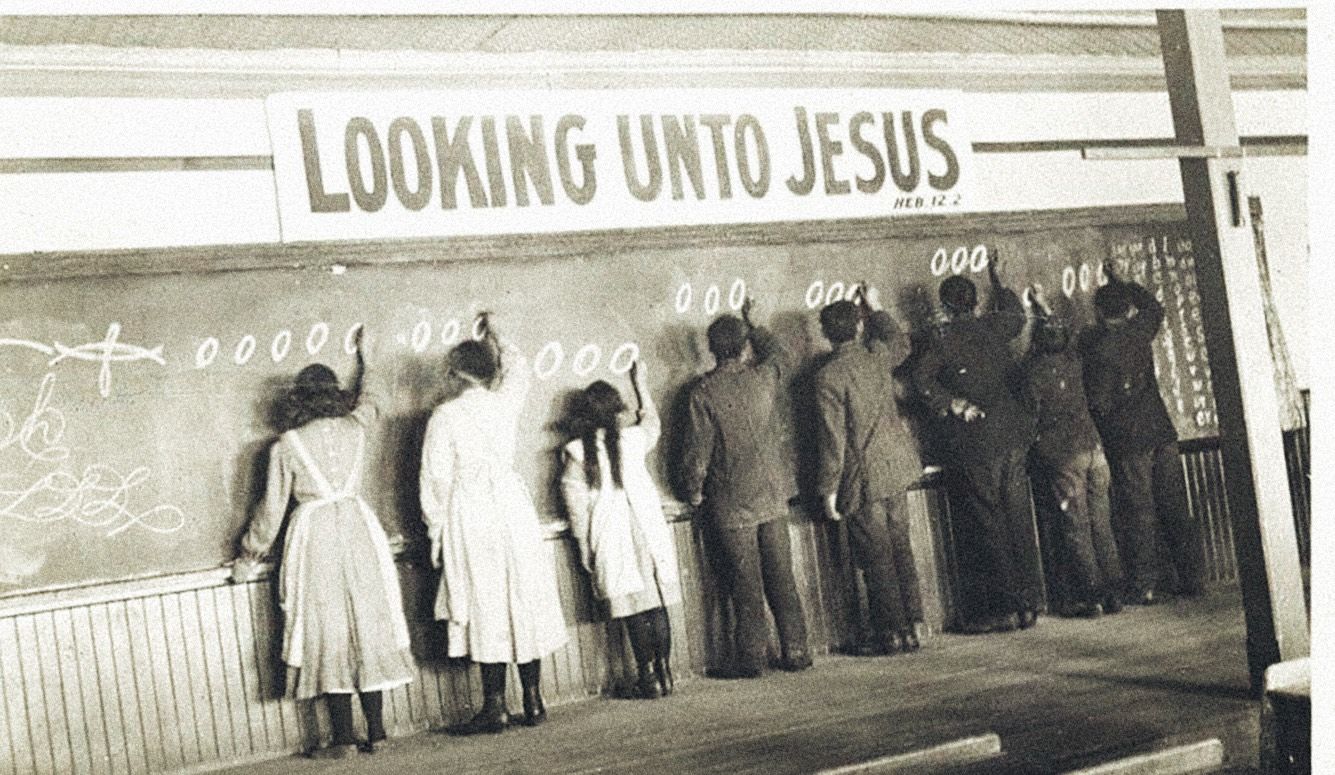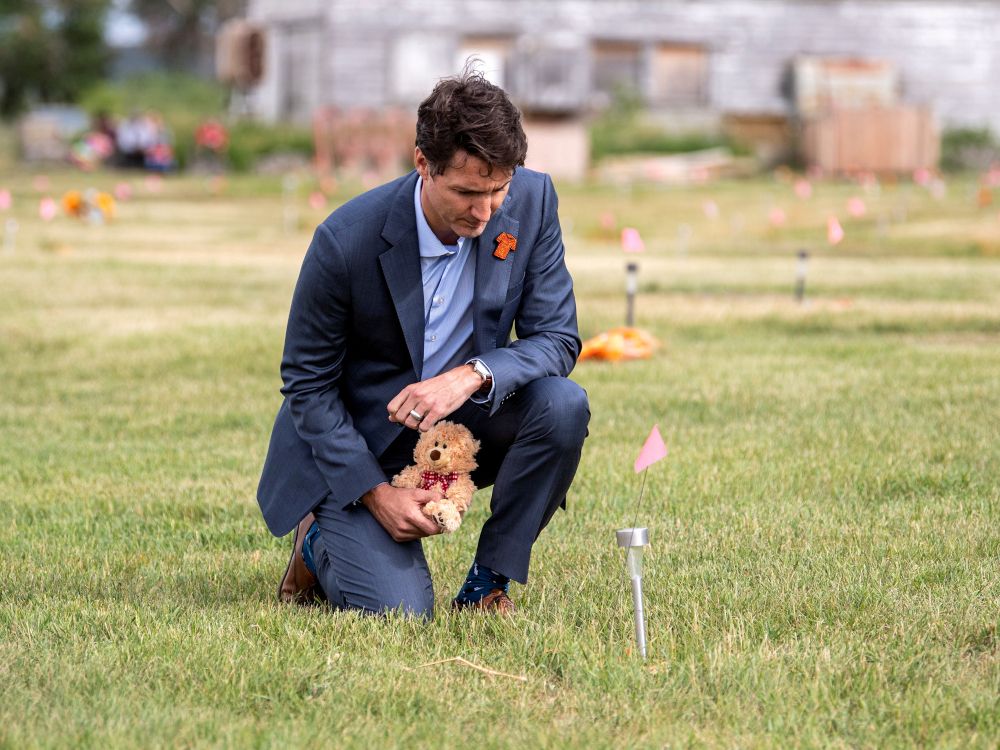Quillette Cetera
In Canada, Asking for Evidence Now Counts as ‘Denialism’
Sensational 2021 claims that unmarked Indigenous child graves had been discovered in British Columbia now seem doubtful. But saying so may soon be a criminal offence

It’s now been more than two years since Canada was convulsed by claims that 215 unmarked graves of Indigenous schoolchildren had been discovered on the grounds of a former residential school in Kamloops, British Columbia. No actual bodies or human remains were in evidence—just ground-penetrating radar data indicating regularly-spaced soil dislocations. But you wouldn’t have known that from the breathless manner in which the story was reported at the time. A Global News headline announced the “Discovery of Human Remains at Kamloops Residential School Grounds.” Another, at the Toronto Star, declared, “The Remains of 215 Children Have Been Found.”
I was one of the many Canadians who believed these headlines. The racist abuses meted out by Canada’s 19th- and 20th-century-era residential-school system, which had been created to “civilize” Indigenous people and strip them of their culture, has been widely discussed for decades. Given this dark history, it wasn’t hard to believe that some of the priests and educators who ran these schools hadn’t just been cruel and negligent (this much was already known), but also had committed acts of mass murder against defenceless children.
Without waiting for the hard evidence to be sprung from the earth, flags were lowered, July 1st Canada Day celebrations were cancelled, Justin Trudeau took a knee for the cameras, and the whole nation went into an utterly unprecedented collective period of self-flagellation. Before the summer was over, Trudeau pledged more than $300 million in new funding for Indigenous communities, so they could complete the grim task of scouring the earth for child corpses. The Canadian Press later called it the story of the year.
Twenty-four months later, much has changed. During this entire period, not a single unmarked grave, body, or set of remains is known to have been found at Kamloops, nor at any of the other First Nations communities that conducted similar ground-penetrating radar surveys.
This doesn’t mean that graves and bodies won’t be found at some indeterminate point in the future. But given that the originally announced radar data would have indicated to Indigenous groups and forensic investigators exactly where any suspected human remains would be lying, the passage of two years without the reported unearthing of physical evidence can only be described as a strikingly odd development.

As I noted in a recent article for a British magazine, and here at Quillette, this is a subject that many polite Canadians are scared to talk about. In 2021, the assumed discovery of those 215 unmarked graves took on the quality of a sacred national narrative. Pointing out the holes in that narrative that have since developed, as I am doing here, feels like secular sacrilege.
Moreover, there’s a considerable amount of political capital at stake. During the 2021 federal election campaign, Trudeau campaigned on a promise to make amends for the murderous horrors inflicted upon Indigenous Canadians by his forebears. And Indigenous leaders, quite understandably, were happy to take the Prime Minister’s money as he did so. Journalists assured their readers, listeners, and viewers that the presumed graves offered further proof that Canada was a “genocide state,” thereby sparking all manner of new charitable initiatives, hashtags, and T-shirt campaigns. After all this, few public figures have any incentive to admit that perhaps we all might have waited for the facts before setting about the garment-rending with such gusto.

Only one large Canadian media outlet, the National Post, has dared publish a full and frank analysis of how everyone got the unmarked-graves story wrong. Other outlets have either ignored the story’s denouement altogether, or have gone further by denouncing revisionism as a symptom of bigotry. At the Star, for instance, an op-ed writer opined that asking authorities to produce physical evidence in regard to the claimed graves is tantamount to “a racist rant bordering on genocide denial.”
Yet even as they publicly hew to the orthodox line on the unmarked-graves story, Canadian reporters and editors are now adding language that signals the growing uncertainty about what actually lies beneath the ground. The aforementioned Global News, a large multimedia brand, offers an informative case study. In 2021, a Global headline alluded (incorrectly) to the “discovery of human remains.” In a story published a year later, it was a “finding of unmarked graves.” Then last month, on the second anniversary, the editors retreated to the more lawyerly formulation, “Suspected unmarked graves” (my emphasis). Elsewhere in its 2023 reports, Global has referred to “potential unmarked graves” and “plausible unmarked graves.”

Like most Canadian media outlets, Global hasn’t gone back to correct its earlier reports on the subject, let alone offered any kind of candid explanation for why it is doing so. And so the unmarked-graves story now exists in an odd limbo state—having gradually become more dubious with every passing month, but not so dubious that it has been formally debunked.
Even some foreign media sites have failed to correct their reporting. On May 28th, 2021, a New York Times reporter named Ian Austen told readers that a “mass grave” containing Indigenous children had been “reported in Canada.” In fact, not only had no “mass grave” been found, but no Indigenous community had made such a claim. The leader of the First Nations community being referenced explicitly told the media there was no mass grave, and disavowed usage of the term.
It’s been two years since the Times ran this claim, with no correction forthcoming. Nor has the Times corrected an equally bungled 2021 follow-up report by the same author, the sub-headline on which referred to “the discovery of the remains of hundreds of children.” No “remains” had been discovered, either then, or now.
The desire to protect the unmarked-graves narrative remains especially strong among Canada’s ruling Liberals, whose Minister of Crown-Indigenous Relations has taken the rather extraordinary step (for a liberal democracy, at least) of instructing reporters not to report heretical facts. In early 2022, when a few writers began saying out loud how odd it was that no bodies had yet been discovered in Kamloops, the minister, one Marc Miller, denounced these Canadians as being “part of a pattern of denialism and distortion that has coloured the discourse on Residential Schools in Canada. They are harmful because they attempt to deny survivors and their families the truth.”

Miller’s suggestion here is that “the truth” of the graves’ existence should be taken as a matter of faith by those of pure (political) heart, regardless of what evidence happens to be available. By adding in the word “denialism,” Miller plainly seeks to compare those of impure heart to holocaust deniers.
And yet, last month, Miller himself felt compelled to hedge awkwardly when tweeting on the two-year anniversary of the unmarked-graves story—excoriating those who make “sickening attempts” to “deny” history, while also referencing the “finding of over 200 suspected unmarked graves” (my emphasis). The s-word betrays Miller’s hypocrisy: If acknowledging that those 200-plus graves in Kamloops might not actually exist qualifies someone as a “sickening” genocide denier, then Miller seems to belong on the list.
Two years ago today, Tk’emlúps te Secwépemc First Nation shared the finding of over 200 suspected unmarked graves around the former Kamloops Residential School. As time passes, and as we continue to see sickening attempts to deny the dark history of residential schools, #cdnpoli
— Marc Miller (@MarcMillerVM) May 27, 2023
Later on his thread, Miller seems to suggest that the truth of the graves’ existence is beside the point anyway, because the very act of discussing the issue “remain[s] traumatic for the community, survivors and their families.”
And so writers should resist the temptation to dispute the credulous 2021 consensus, Miller tells us. Instead, he instructs journalists to assume the role of monks tasked with “reflection and contemplation of the work that remains to ensure Indigenous Peoples heal.”
Miller’s sanctimonious demands don’t carry the force of law, thankfully. But it isn’t hard to imagine that changing. In a report released on Friday, Kimberly Murray, the independent special interlocutor appointed by Trudeau to investigate the issue of unmarked graves, exhorted politicians to give “urgent consideration” to “civil and criminal [legal] sanctions” against residential-school “denialism.” It’s an idea that’s already been promoted by an MP named Leah Gazan. And Canada’s Justice Minister, David Lametti, says he’s open to the proposal.
The Independent Special Interlocutor for Missing Children and Unmarked Graves and Burial Sites associated with Indian Residential Schools will release her Interim Report at 12pm EST today in Cowessess, Saskatchewan. pic.twitter.com/8kW9P9suJO
— OSI-BIS (@OSI_BIS) June 16, 2023
Like Miller, Murray seems to regard claims of unmarked graves at Kamloops and elsewhere as morally unfalsifiable, since they are “Survivors’ truths.” She repeatedly suggests that the mere act of requesting physical evidence is, itself, evidence of denialism. On this point, Murray approvingly quotes the chief of a First Nation in western Canada who
subtly addresses denialism by stating that ‘[w]hether or not unmarked graves are found, there is enough documented oral and archival evidence to say that these burials do or did exist.’ The community acknowledges that the voices of Survivors, who have first-hand accounts of what happened in Indian Residential Schools, should be prioritized over anything else.
The question of what Murray wants banned under the category of “denialism” isn’t clear, however. On page 104 of her report, she references (1) statements, such as those contained in this article, that scrutinize specific claims being made about suspected graves on specific Indigenous reserves; (2) broader statements that cast doubt on the existence of unmarked graves at any residential school; and (3) even more generalized statements, which serve to “defend the Indian Residential Schools System [and] deny that children suffered physical, sexual, psychological, cultural, and spiritual abuses.” All of these are described by Murray as detestable utterances. But it isn’t clear which, if any, Murray wants to criminalize.
At other points in her report, Murray goes further, suggesting that the deniers’ ranks encompass anyone who does not pledge his or her belief that residential schools were instruments of literal genocide. “Failing to acknowledge the deliberate genocidal harm inflicted on Indigenous children becomes a barrier to reconciliation and reinforces a culture of denialism in the Canadian population,” she writes. This would suggest that a person could be a “denier” without saying or writing anything at all, insofar as they had not heeded Murray’s exhortation that “each of us must stand up and speak out” in the manner she prescribes.
In the long run, however, this kind of semantic analysis likely won’t matter much, since any legal effort to censor “denialism” (however that word is defined) would almost certainly be struck down by courts as an infringement on free speech. Canadian constitutional principles permit laws that ban the wilful promotion of “hatred” against identifiable groups. But no one can seriously argue that asking for evidence of unproven murder allegations, or offering dissenting theories about residential schools come close to meeting that standard.
And yet this isn’t a spectacle that Canadians should ignore: The fact that public figures are even taking this kind of censorship proposal seriously speaks to just how desperate they are to avoid a critical reexamination of the country’s 2021 unmarked-graves social panic. Trudeau and his ministers must know that the moment of reckoning can’t be put off forever. My guess is that they’re just hoping they won’t be in office when it arrives.









